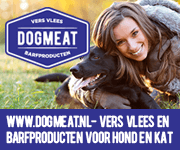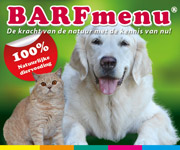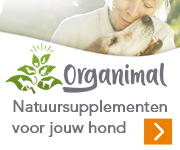Gedeelte van Lew Olson's brief, vrij vertaald....de rest in Engels
Hoewel dit onderzoek meer Salmonella en E. coli aantoont in rauw gevoerde honden, toont het hogere resultaten voor de bacteriën Clostridium, methicilline resistente S aureus en Vanomycin resistente enterokokken.
En de hoeveelheid van E Coli en Salmonella, terwijl het niet zo hoog is als bij rauw gevoerde honden, is aanzienlijk.
Mijn conclusie is dat, in de haast om de rauwe voeding label als de schuldige aan te wijzen, en het gebruik van uw vrijwilligers in het programma te weigeren, plaats u de schijnwerpers op het probleem dat alle honden ziekteverwekkers kunnen zijn,
ongeacht hun dieet. Dit kan leiden dat het voor alle honden verboden zou worden in 'n medische inrichting.
In wezen, zie ik deze nieuwe regel als jezelf in de voet schieten.
Ik weet haast wel zeker dat met uw bias om te bewijzen dat een rauw dieet ziekteverwekkers zou kunnen verspreiden,
dat je vergeet bent om een volledig onderzoek te doen over de kwestie dat Salmonella overal aanwezig is, ook droog hondenvoer, de bodem, het vijverwater en zelfs van de mens.
Begrijp dat u op zoek bent naar smalle parameters, die een meer zorgvuldige en uitgebreide studie nodig heeft
over hoe ziekteverwekkers worden verspreid en hoe verstandige en effectieve preventie gebruik .
Ik zie geen probleem met de honden bezoek in verpleeghuizen, ziekenhuizen of verpleeghuizen, zolang de hygiëne goed is toegepast.
Dat ze schoon zijn,vlooien teken vrij zijn, zorgen dat de hond geplast/gepoept heeft voor het bezoek,
en schoonmaak materiaal ,keukenrol of papier handdoekjes aanwezig is in geval van een ongelukje.
Alle onderzoek wijst erop dat ziekteverwekkers worden verspreid door ontlasting of speeksel.
Dat zou betekenen dat de honden de patienten niet mogen likken, en er voor te zorgen dat hun vacht schoon is
en vertrouw op je vrijwilligers. De vrijwilligers zijn de ruggengraat van uw organisatie, en zij doen dit liefdevolle vrijwilligerswerk zonder vergoeding, en geven de Delta-groep duizenden uren vrijwilligerswerk.
Ik hoop dat u deze brief leest met de bedoeling waarop het is geschreven,want soms moeten we een situatie bekijken
door meer onderszoek en verder nadenken, en ook begrijpen hoeveel vreugde en aanmoediging de honden aan zo veel mensen geven.
Bij de patiënen met een ernstige ziekte en die ver van huis zijn betekend dat vaak vertraging in hun herstel en genezing.
Huisdieren, zoals u weet, brengen hoop, geluk en steun aan tijdens het genezings proces.
Ik hoop dat u wil nadenken over uw standpunt over deze materie, en zal blijven toestaan dat de therapie honden het werk tot vreugde voor zowel uw klanten en uw vrijwilligers kan blijven brengen.
Mijn interesse in het onderzoeken en mijn bericht naar u, is in herinnering aan mijn Ch. Blackwood Dante V Lyvngwerth CD
en Ch. Bourbon Bravo van Blackwood, twee van mijn Rottweilers die ik had, ze waren de ontvangers van de Amerikaanse Rottweiler Club TRUE onderscheiding, voor hun vele uren werk van de therapie. En ja, ze waren beiden gevoed met een rauw dieet. Ze werkten beide in de intensive care-unit van de ziekenhuizen in Tyler, Texas, voor vele jaren.
Lew Olson PhD Natural Health
Hier de Engelstalige :
Last week, I wrote a letter to the Delta Society, a nonprofit group based in Washington that offers pet therapy certifications for dogs. Unfortunately, they recently banned dogs in their program that are fed a raw diet. They called ‘protein based’ diets unsafe, in that they may spread salmonella and other bacteria.
I am writing this month’s newsletter to dispel these and other myths about a fresh food diet for dogs. Part of my concern of the edict that the Delta Society proclaims, is that they are painting protein as a pathogen containing substance, waiting to infect humans. When I read over the two articles they posted to make these claims (see: http://www.deltasociety.org/Page.aspx?pid=638 ), which I analyzed and refuted in my letter to them, I found the tests they cited faulty (not enough dogs in the studies and unequal groups of raw fed dogs to commercial diet fed dogs) and found they ignored government studies on salmonella in dogs and the evidence of salmonella in commercial pet foods prompting numerous recalls. Salmonella is also found in the environment in numerous places, such as ponds, reptiles, dirt and feces. Please note that all the research I found showed that dogs *rarely* become ill from salmonella. From this research I wrote the following to the Delta Society:
To the Delta Society:
While checking http://www.google.com/ to investigate your claims of raw protein causing a significant shed of pathogens in the dog’s stool, I found the largest amount of information on an internet search shows that dry dog food is the biggest offender of carrying salmonella contamination:
http://www.webmd.com/news/20080915/salm ... ood-recall
http://health.usnews.com/health-news/di ... inues.html
http://www.msnbc.msn.com/id/19076207/
http://www.foxnews.com/story/0,2933,356203,00.html
http://pet-nutrition.suite101.com/artic ... l_expanded
http://www.washingtonpost.com/wp-dyn/co ... 02363.html
http://www.emaxhealth.com/1/117/24691.html
http://www.marketwatch.com/story/dog-fo ... la-problem
http://health.usnews.com/health-news/fa ... l?PageNr=2
One expert thinks contamination of pet food is likely to become more commonplace.
"There have been problems with pet foods before," said Dr. Pascal James Imperato, chairman of the department of preventive medicine and community health at the State University of New York Downstate Medical Center in New York City.
"If the food had any animal product in it, there could have been contamination, or if it was being processed in a plant where they were also processing animal product, then contamination can easily occur," he said. "There is greater industrialization of the production of food products, both for humans and animals, and these are complex processing systems. Therefore, there is greater opportunity for contamination," Imperato said. "We are likely to see many more of these problems."
Secondly, a large percentage of all dogs carry salmonella, regardless of diet. This has been known for some time:
http://fsrio.nal.usda.gov/document_fshe ... uct_id=223
Animal-to-Human -- Salmonella can be acquired directly from pets (e.g. cats and dogs), reptiles, and birds. The feces of pets, especially those with diarrhea, contain Salmonella and humans can become infected if they do not wash their hands after contact with pets or pet feces.15 The pets may suffer Salmonellosis as a reverse zoonosis, with infection transmitted from human-to-pet and subsequently back to other humans. Salmonella can also be found in healthy dogs and cats at rates of up to 36 percent and 18 percent, respectively.52
http://www.bravorawdiet.com/recallinfo.html#merck
“Here’s what the Merck Veterinary Manual says about Salmonella in pets:
“Many dogs and cats are asymptomatic carriers of Salmonellae. Clinical disease is uncommon, but when it is seen, it is often associated with hospitalization, another infection or debilitating condition in adults, or exposure to large numbers of the bacteria in puppies and kittens.” 2
To translate: Many dogs and cats carry Salmonella in their systems (as evidenced by the presence of Salmonella in their feces), but they rarely become ill. It is just a natural part of what lives in their GI systems. When illness does occur it is usually associated with an already ill animal who is already immune-compromised. Illness may also occur when young animals are exposed to very high numbers of the bacteria. This might happen if a puppy finds and licks the inside of an outdoor garbage can that has never been washed and is teeming with bacteria.
Research indicates that approximately 36 percent of healthy dogs and 17 percent of healthy cats carry Salmonella in their digestive tract.3 ..The American Veterinary Medical Association (AVMA) agrees with these numbers.4 It is interesting to note that these numbers are based on kibble-fed dogs – which means that Salmonella is a natural part of life for our pets regardless of what they are eating.
The resistance to illness in dogs from Salmonella is apparent in a study of raw-fed dogs in Canada. In that study 16 dogs were deliberately fed commercial raw diets contaminated with Salmonella. None of those 16 dogs became ill. Additionally, only 7 of those 16 dogs shed Salmonella in their feces.5 While it was not further studied, one might speculate that the 9 dogs who ate Salmonella-contaminated food but did not shed it in their feces effectively neutralized the bacteria.
Even the FDA, in the FDA Consumer magazine, acknowledges that healthy pets rarely become ill from Salmonella contamination.6”
2.http://www.merckvetmanual.com/mvm/index ... /20900.htm
3.Hand, M.S., Thatcher, C.D., Remillard, R.L., and Roudebush, P. (2000) Small Animal Clinical Nutrition. Mark Morris Institute. Pg. 36-42,188.
4 http://www.avma.org/reference/zoonosis/ ... llosis.asp
5 Finley, R., et al. (2007) The Risk of Salmonellae Shedding by Dogs Fed Salmonella-contaminated Commercial Raw Food Diets. Can Vet J. Vol. 48 #1. Pg. 69-75.
6 http://www.fda.gov/FDAC/departs/2000/500_upd.html#pigs
It is also interesting to note that humans can transmit salmonella to dogs:
http://www.vetmed.wisc.edu/pbs/zoonoses ... nella.html
Dogs and cats may suffer salmonellosis as a "reverse zoonosis," with infection transmitted from human-to-dog and subsequently back to other humans. Similarly, outbreaks of Salmonella infections in large animal teaching hospitals have been linked to the introduction of bacteria from infected human personnel, with subsequent spread to animals and then back to other human workers.
In one of the studies quoted on your website as part of your proof, in the first article only ten dogs were used to test for salmonella. The authors themselves state:
http://www.ncbi.nlm.nih.gov/pmc/articles/PMC339295/ Although these results are suggestive, they are not statistically significant owing to the small number of dogs studied. Larger numbers of dogs or multiple stool samples from each dog might have allowed the results to reach statistical significance. Unfortunately, the limited funding to this private clinic for this study did not allow for the inclusion of more study animals or multiple cultures from individual subjects.
And, in another study:
http://www.ncbi.nlm.nih.gov/pmc/articles/PMC1716752/
Since this study was an experimental trial with laboratory beagles, results may not be completely indicative of what would be experienced with owned dogs of various breeds. Determining that the raw food diet was the main source of salmonellae shedding in owned dogs would be more complicated, as they could be exposed to several other possible sources of salmonellae, including other animals; other food items, including treats; the environment; and their owners.
www.asph.org/vetmed/ppt/lefebvre.ppt
The information below is from your friends in Canada again. This slide has been prepared to show the dangers of raw fed foods for therapy dogs. It did a great job of skewing the results. They show the high incidence of bacteria found in 40 raw fed dogs stools, but somehow tends to downplay the amounts found in dogs fed a dry diet.
This study shows:
Raw fed dogs (400) Dry food fed dogs (156)
0 - for Vanomycin resistant enterococci 1 - for Vanomycin resistant enterococci
1 - for Methicillin resistant S Aureus 8 - for Methicillin resistant S Aureus
5 for Clostridium difficile 40 - for Clostridium difficile
19 for Salmonella 12 – for salmonella
31 for E Coli 32 - for E Coli
While this study may show more Salmonella and E Coli in raw fed dogs, it shows higher results for the bacteria Clostridium, Methicillin resistant S Aureus and has Vanomycin resistant enterococci. And the amount of Salmonella and E Coli, while not as high as raw fed dogs, is significant.
My conclusion is that, in your hurry to label the raw diet as the culprit, and eliminate its use from your volunteers in your program, you are only putting the spotlight on the issue that all dogs can carry pathogens regardless of diet . This could cause all dogs to be banned from use in any health facility. In essence, I see your new rule as ‘shooting yourself in the foot’. I feel in your confidence and your bias of proving a raw diet could spread pathogens, you forgot to do a full research on the issue. Salmonella is everywhere, including dry dog food, the soil, pond water and even from humans. Understand you are looking at narrow parameters that need a more careful and extensive study on how pathogens are spread and how to use sensible and effective prevention.
I don’t see a problem with allowing dogs into nursing homes, hospitals or hospices, as long as good hygiene is applied. That would include bathing the dogs, insuring therapy dogs are flea and tick free, making sure the dog’s are properly exercised (i.e., pottied) before a visit, and carrying sterilization equipment (bleach, bags and paper towels) in case of an accident. All research points out pathogens are spread by stool or saliva. That would mean not allowing the dogs to lick the clients, making sure the coats and skin are recently bathed and trusting your volunteers. Your volunteers are the backbone of your organization, and they do this loving volunteer work without compensation and give the Delta group thousands of volunteer hours. I hope you take this letter in the light it was written, in that sometimes, we need to look at any situation with more study and thought, and understand the healing, joy and encouragement dogs give so many people. Being a patient with serious illness and being away from home often stifles recovery. Pets, as you know, bring hope, happiness and support to begin the process of healing.
I hope you rethink your position on this matter, and continue to allow your therapy dog work to bring joy to both your clients and your volunteers. My interest in researching this and writing to you is in memory to my Ch. Blackwood Dante V Lyvngwerth CD and Ch. Bourbon’s Bravo of Blackwood, two Rottweilers I owned who were the recipients of the American Rottweiler Club TRUE award, for their many hours of therapy work. And yes, they both were fed a raw diet. They both worked in the intensive care units of hospitals in Tyler, Texas, for many years.
Lew Olson PhD Natural Health
http://www.b-naturals.com/
I hope this research and the materials I found help dispel anyone’s fear about a raw diet, and that dogs simply have a different digestive tract than we do. Dogs are carnivores and have a short, simple digestive tract, designed to easily kill bacteria in their stomachs, which has far more gastric juices than we do. For more information on canine digestion, read here:
http://www.b-naturals.com/newsletter/digestion-anatomy/
Normal food safety is needed when handling raw meat. This includes refrigerating the food properly and using proper precautions in washing containers, sinks and equipment used to prepare dinner for your dogs. I hope this article gives all my readers confidence in feeding a raw diet and understanding that sometimes common sense, along with a simple 'Google' search, can often dispel any misinformation or fear generated by myths and fear.
Lew Olson PhD Natural Health
http://www.b-naturals.com/






